What does a wax gourd look like and how to grow it?
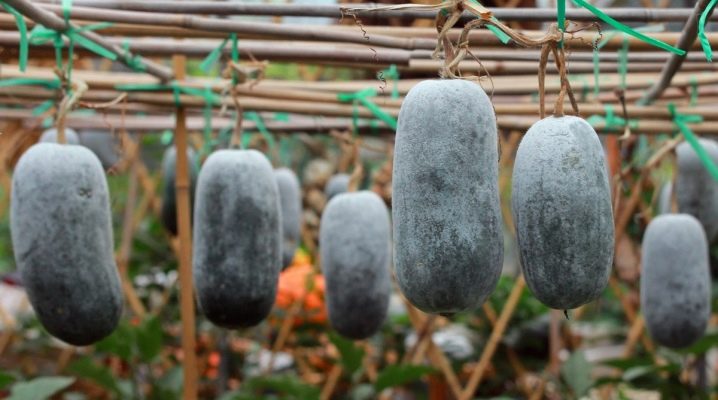
Wax gourd has another name - Benincasa. It is a wonderful annual crop that is widespread in the southern regions. The fruits contain an impressive percentage of nutrients and trace elements. In addition, the waxy gourd has an excellent taste. In this article, we will find out what Benincasa looks like and how it should be grown correctly.
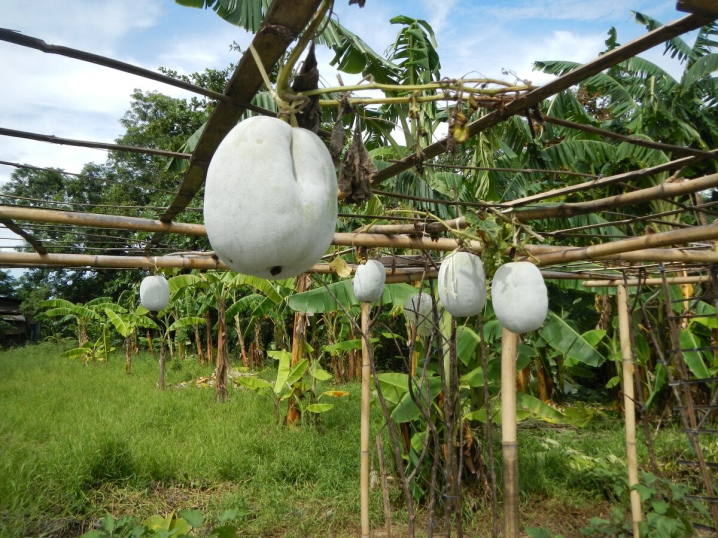
Description
Benincasa is a separate pumpkin variety that belongs to the liana-like crops. Native to Southeast Asia, this plant is now widely found in many other warm countries. The culture is very popular because it has remarkable medicinal properties and can be stored for a long time.
The stalks of the waxy gourd are usually slender. Their length is most often 4 m. The stems of the tasty plant in question are covered with medium-sized leaf plates. Benincasa blooms very effectively and beautifully.

At this time, several large orange flowers are formed at once. At the same time, they emit pleasant and rich aromas.
The waxy gourd can be very large. If this plant is provided with optimal conditions for development and growth, then ripe pumpkins can reach an impressive mass of 10 or more kilograms. The fruits themselves are distinguished by a characteristic rounded or oblong shape, have a discreet greenish tint. The upper part of mature pumpkins is covered with a special waxy bloom, coupled with microscopic villi. The latter are aimed at protecting the fruit.
The pulp of Benincasa has a pale white tint. Usually this is a rather juicy and sweetish component, in which a light and pleasant sourness can be traced. Wax gourd is a very picturesque plant that has many additional names. It is also called white Indian pumpkin or Chinese calabash. Benincasa is also called a pumpkin pillow because it is very similar to traditional Chinese headrests.

Compact and juicy, Benincasa boasts a very spectacular decorative look. She looks attractive at all stages of her growth and development. The fruits of such a pumpkin do not immediately become waxy. They acquire a whitish bloom during their maturation. The older the fetus, the larger the wax layer formed on it. In the distant past, the aborigines removed this natural wax to make candles from it.
The plant in question is also distinguished by pronounced healing properties. In China, the fruits of Benincasa are widely used in traditional medicine. The pulp of the product can be used as a diuretic or antipyretic agent. In addition, the pulp of the plant can serve as a pain reliever.
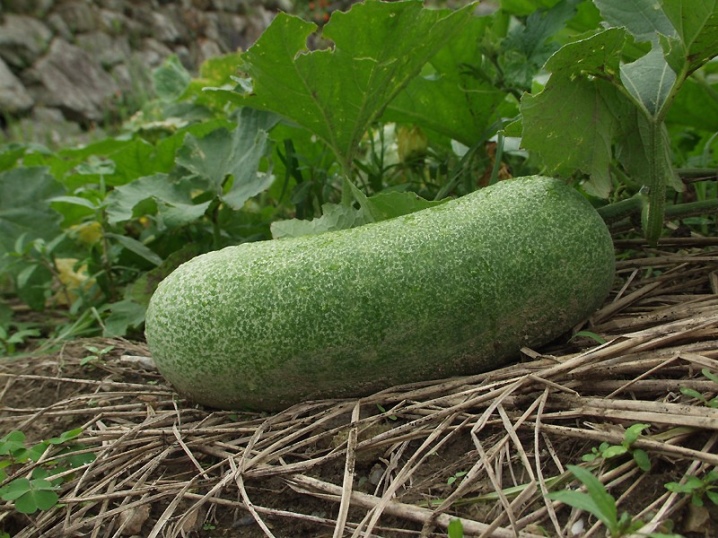
How to grow seedlings?
There are several important aspects of growing a healthy and tasty wax gourd. The method of growing through seedlings is popular. In the north and central regions of the country, the product in question is most often grown in the seedling method. For this, it is necessary to carry out several stages of work.
- First, you need to prepare a comfortable tank to accommodate plantings in it. The ideal solution would be special peat pots, which are sold in many retail outlets.
- Soil is poured into peat pots for further placement of seedlings.
- A hole is made in the soil mixture. A couple of centimeters deep is enough.
- In each of the holes made, you will need to place a couple of seeds.
- Seedlings are carefully sprinkled with earth.
- Next, the pots are watered. The liquid must be at a comfortable room temperature.
- Then the prepared pots with seedlings will need to be rearranged on the windowsill on the south side.
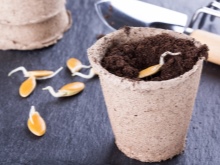
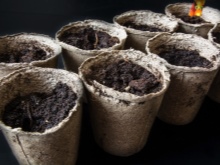
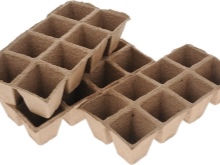
After the germination stage, the most weakened sprouts will need to be cut very carefully with scissors. In order for the seedlings of fragrant pumpkin to grow quickly, it is necessary to provide it with optimal conditions.
- It is important to keep the temperature within 25 degrees Celsius. Plants must be guaranteed sufficient thermal insulation before sprouting. For this purpose, cover the peat pots with a colorless film.
- Watering the seedlings is best done with a spray bottle. Plants should be sprayed on a regular basis, based on the degree of soil drying.
- Proper hardening will be required. 1 week before moving into the soil layer, the culture must be transferred to the street, placing it there for 3-4 hours. So the plant will adapt to the desired climatic conditions.


Landing in open ground
Plants should be moved from peat containers to the soil layer by the beginning of June, when warm weather sets in the yard. You can also transplant plants into a greenhouse, where temperature values of 25-30 degrees are always maintained.
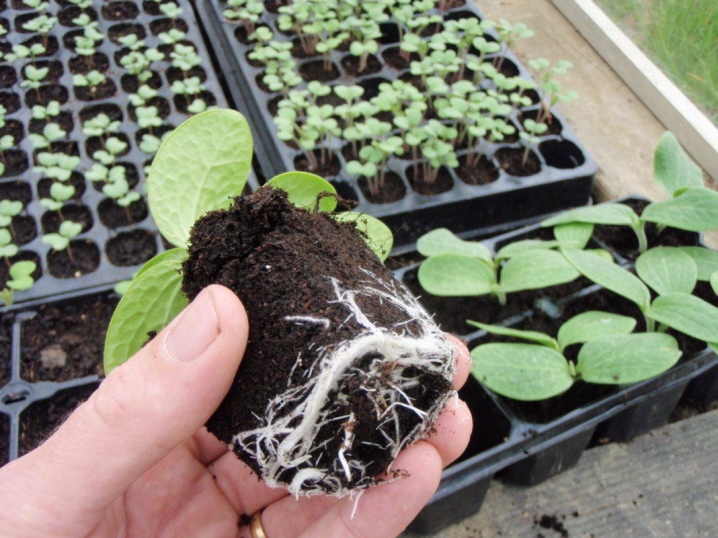
This method will be an excellent solution when it comes to cold regions where planting is permissible only in greenhouses.
Before transplanting plants into open ground, the summer resident will need to properly prepare the beds. In addition, it is very important to choose the optimal place to place the wax gourd. Let's take a look at some helpful tips.
- It is necessary to find a well-lit area in the vegetable garden or in the garden.
- The soil into which the transplant will be carried out must be fertile, characterized by a moderate level of acidity.
- It is imperative to take into account which plants were in the selected place earlier. It is recommended to plant Benincasa in the soil in which beans, peas, potatoes or cabbage forks previously grew.
- For transplanting Benincasa, you should not select those places where the pumpkin previously grew.
- In the autumn season, the site must be carefully dug up. After that, manure should be applied. In the spring, you will need to apply mineral fertilizers.
- Disinfection will be an important step in the transplant. For the prevention of diseases, it is worth using additional cultivation of the land by means of an ash solution combined with water in a ratio of 1 to 10. The finished liquid should be infused for at least 3 days. When the specified time has passed, the composition will need to be applied by spraying.

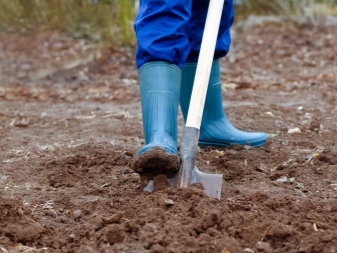
Care
A beautiful wax pumpkin must be looked after according to all the rules. We will find out what kind of care procedures are required for such plants.
Watering
It is very important to water the crop properly.
- Immediately after planting, the pumpkin will need to be watered every day. After 1 week, the frequency can be reduced to a couple of times every 7 days.
- The watering liquid should be warm enough. The optimal value is 20 degrees. Low temperature water will not work as it can destroy the plant.
- Watering is desirable in the evening when the heat goes away. If you water the crop during the day, a crust can form on the soil. If the water gets on the foliage, it can dry out and turn yellow.
- Watering one plant will require about 5 liters of liquid.
- Water should be poured exclusively under the roots, without exposing them.
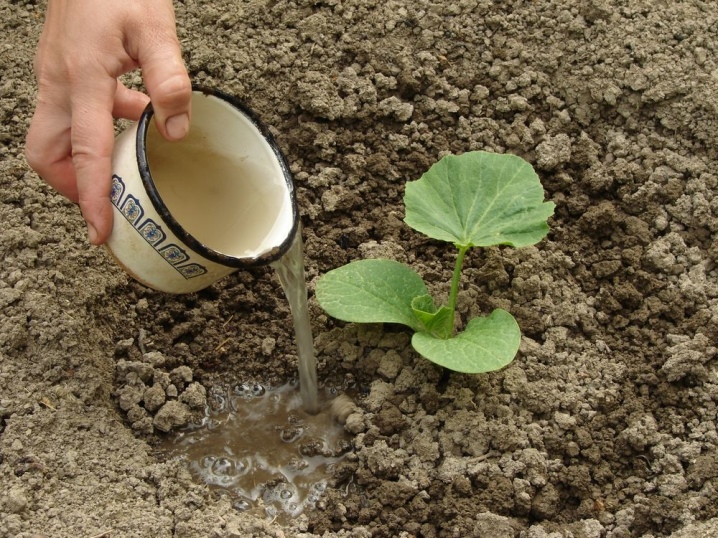
Top dressing
There are a number of rules regarding feeding for the growth of a wax gourd.
- A mixture created from ammonium nitrate, ammophos, and potassium sulfate will be effective and safe. In this case, the following ratio of components will be optimal: 2, 4, 2. The finished solution is mixed with 10 liters of water. Each plant will consume 4 liters.
- In the course of plant growth, at least 2 feeding procedures must be done. They are brought in after the appearance of the fourth leaf and lashes.
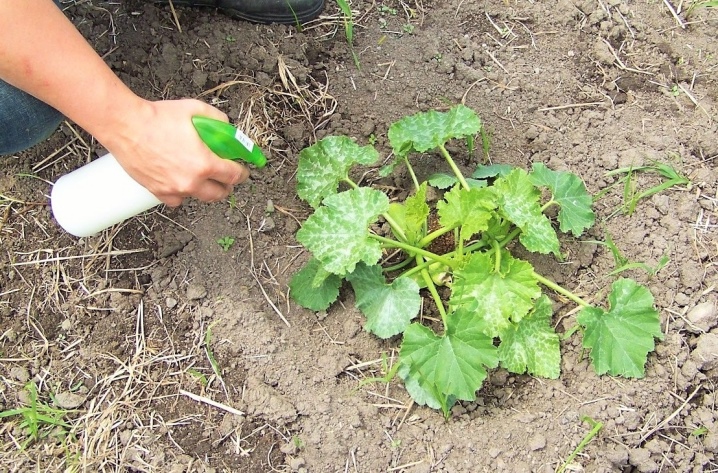
Formation
Wax gourd needs proper bush formation.
- It will be much more convenient to be engaged in the formation if you place a trellis in the garden or in the garden.
- It is necessary to direct the growth forces to 1 main stem. For this purpose, the shoots on the sides will need to be removed.
- The central stem of the culture will need to be pinched only after 3-4 ovaries appear.
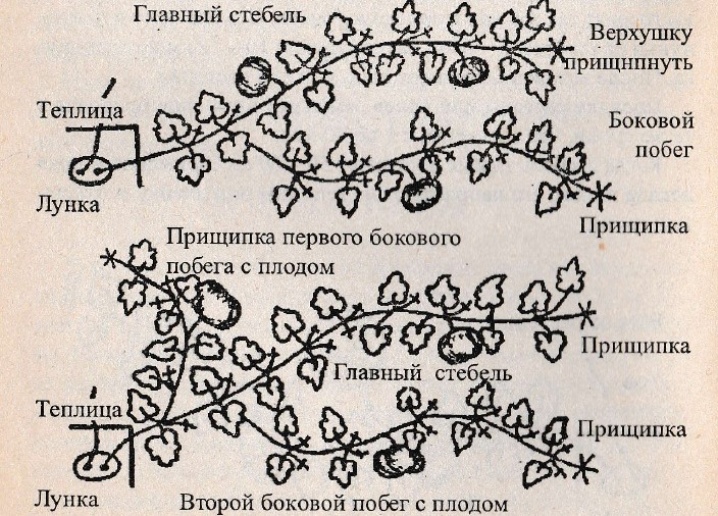
Pollination
In most cases, bees carry out pollination work. If, for any reason, they rarely appear on the site, or the pumpkin grows in greenhouse conditions, then you can do pollination yourself.
- It is necessary to set aside a warm and clear day for this. The pollination procedure should be carried out in the morning.
- You will need to prepare a soft brush. With its help, it will be possible to carefully collect pollen from a male flower.
- The collected components are brought to the female flower, carrying out pollination.

Diseases and pests
For the plant in question, the following diseases and pests are especially dangerous.
- Melon aphid. Harms foliage and ovaries, which is why they completely rot. Pests can appear due to the large number of weeds. They should be removed. You may need to treat the plant with a mild solution of water and soap.
- Spider mite. It feeds on the juices of the foliage, then covers the plates with a spider web, leading to the destruction of the latter. You can save the plant from this parasite with onion or garlic tincture.
- Root rot. A disease of a fungal nature, which quickly destroys plantings. If you water and feed the crop correctly, there will be no problems.
- Mosaic. The main symptom is the formation of colored specks on the leaf plates. The disease is carried by insects, so it is necessary to prevent their occurrence in advance by means of insecticides.
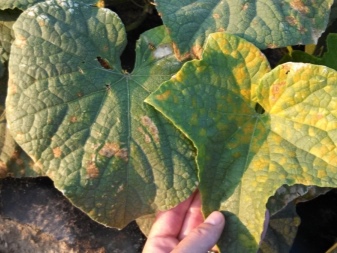
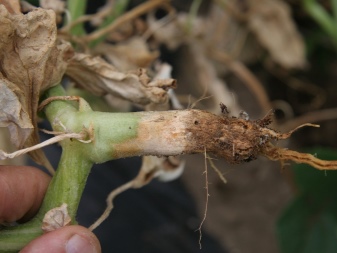
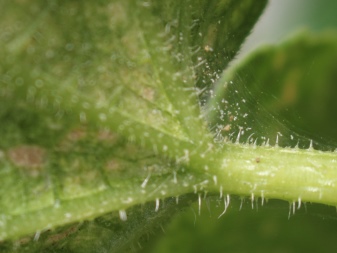
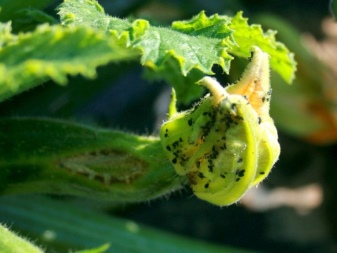
Harvesting and storage
We will learn everything about the peculiarities of harvesting and storing the Benincasa crop.
- It is better to start cleaning before the arrival of winter cold or frost.
- The fruits must be cut very carefully with scissors or a knife. The stalk must remain intact.
- After harvesting, the pumpkin should be sorted. Only fully matured specimens without defects can be stored for a long time. The rest of the fruits are best frozen or eaten quickly.
- The wax layer does not need to be wiped off or washed out, because it is this layer that ensures the long shelf life of the fruit.
- Pumpkin does not have any special storage requirements. It can be simply positioned in a comfortable cool shaded area.
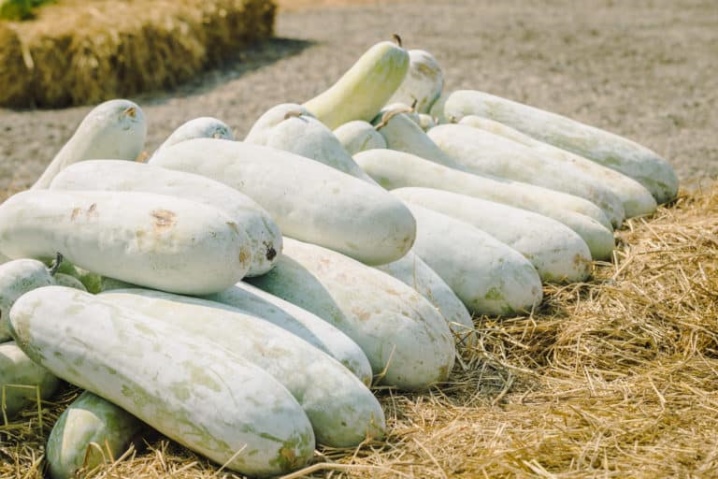
Application
Benincasa is used in different ways. It is not only eaten.
- Any part of this product is actively used in oriental medicine. Pumpkin acts as an aphrodisiac, laxative.
- The product is suitable for the prevention or complete elimination of parasites from the human body.
- Benincasa increases appetite, improves the functioning and condition of the gastrointestinal tract.
- Helps relieve nervous system disorders.
- Promotes the elimination of excess fluid (acts like a diuretic).
- It is used in the treatment of sexually transmitted infections.
- It is consumed for more active lactation in women during periods of feeding.
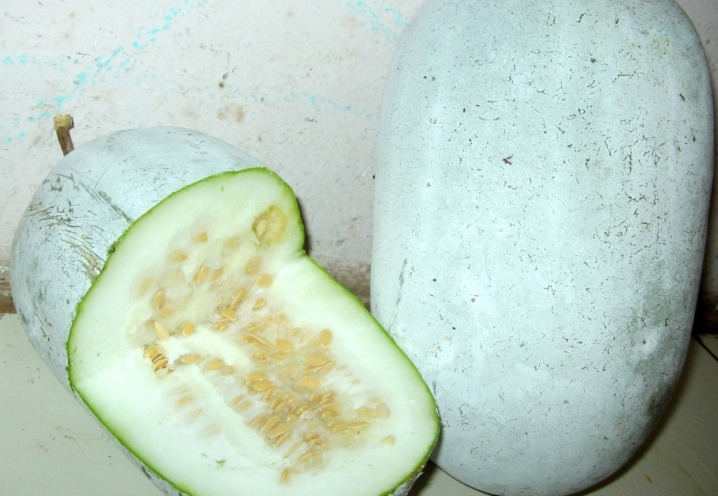








The comment was sent successfully.